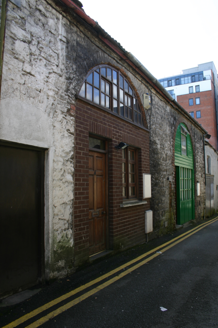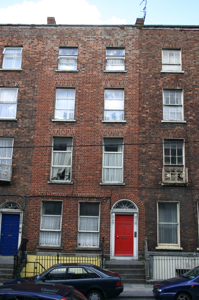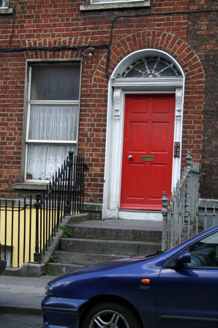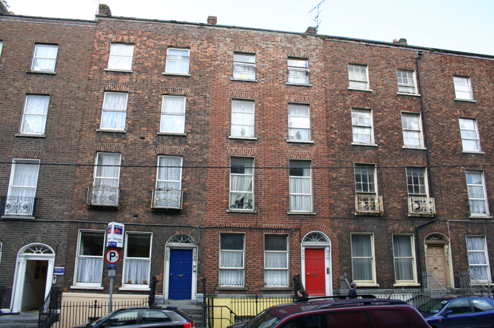Survey Data
Reg No
21517055
Rating
Regional
Categories of Special Interest
Architectural, Artistic
Original Use
House
In Use As
Apartment/flat (converted)
Date
1830 - 1850
Coordinates
157325, 156760
Date Recorded
17/07/2005
Date Updated
--/--/--
Description
Terraced two-bay four-storey over basement house, built c. 1840, sharing a parapet height with No. 10. Asymmetrical alignment of fenestration at ground floor level to accommodate door opening. Pitched roof concealed behind parapet wall. Red brick chimneystack to east and west party wall. Red brick walls laid in Flemish bond; lead damp proof course beneath limestone coping to parapet wall; rendered basement elevation terminating with painted chamfered painted stone plinth course; red brick rear elevation laid in English garden wall bond with diminutive red brick faced return having rendered upper section. Disfiguring plastic repairs carried out with cement mortar to parapet wall and localised spots elsewhere. Square-headed window openings, red brick flat arches, patent rendered reveals, painted limestone sills; replacement uPVC windows. Red brick segmental-arched door opening, patent rendered reveals, and inset timber doorcase, c. 1850, comprising flat-panelled pilasters with foliate console brackets supporting lintel cornice, with original lead detailed spoke-wheel fanlight; replacement panelled timber door leaf. Limestone door platform bridging front site basement area, arrived at by a flight of limestone steps, flanked by wrought-iron railings with Neo-classical cast-iron rail posts with pineapple finials. Front site basement area enclosed by original wrought-iron railings with cast-iron rail posts having pineapple finials in varying degrees of intactness; modern gate to basement area, accessed by concrete steps with mild steel hand rail. Fine rubble limestone coach house to rear site access lane, distinguished by dramatic arched opening, and in residential use.
Appraisal
The proportions of this house, like those on Mallow Street, appear quite narrow in width compared with height from ground level to the parapet wall. It forms part of the terrace enclosing Mallow Street to the north where the Georgian townhouses are each of a similar scale. uPVC windows, and cement mortar reduce the character. The original coach house is a valuable historical structure on the rear site and both the house and coach house should be viewed as an ensemble.







